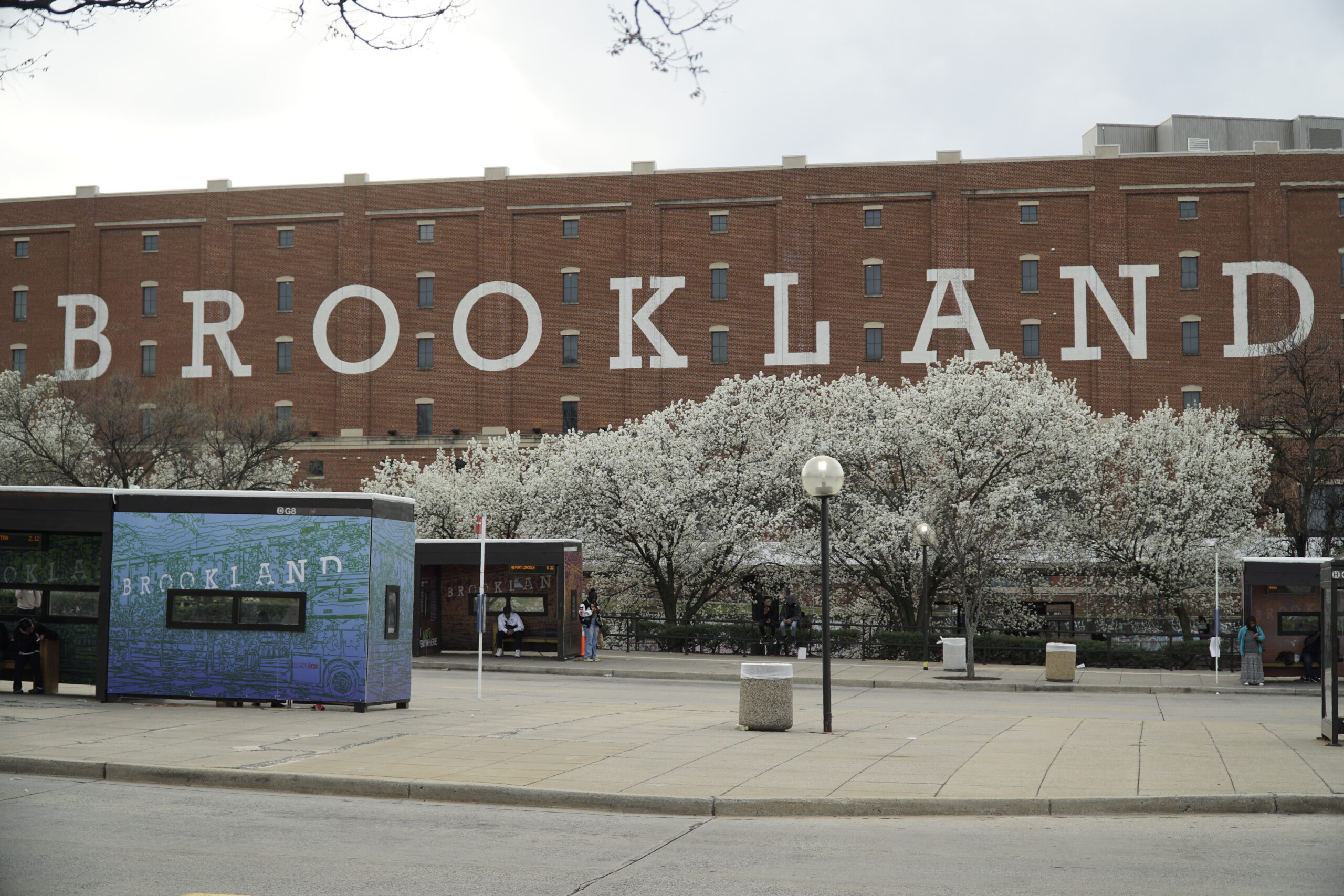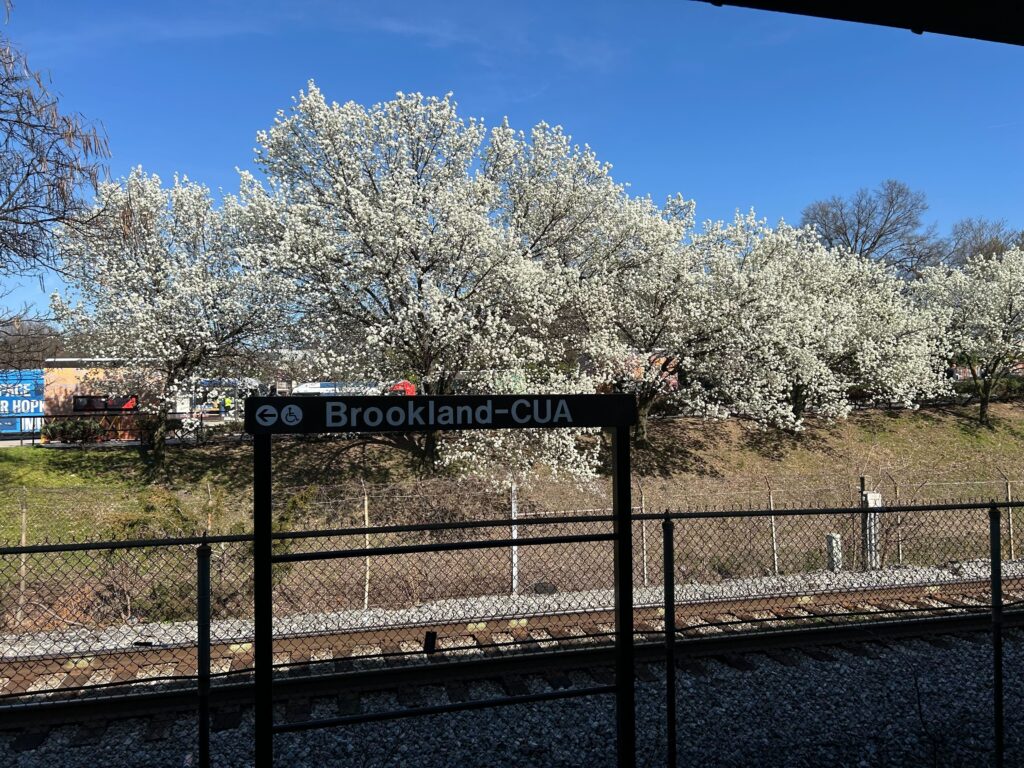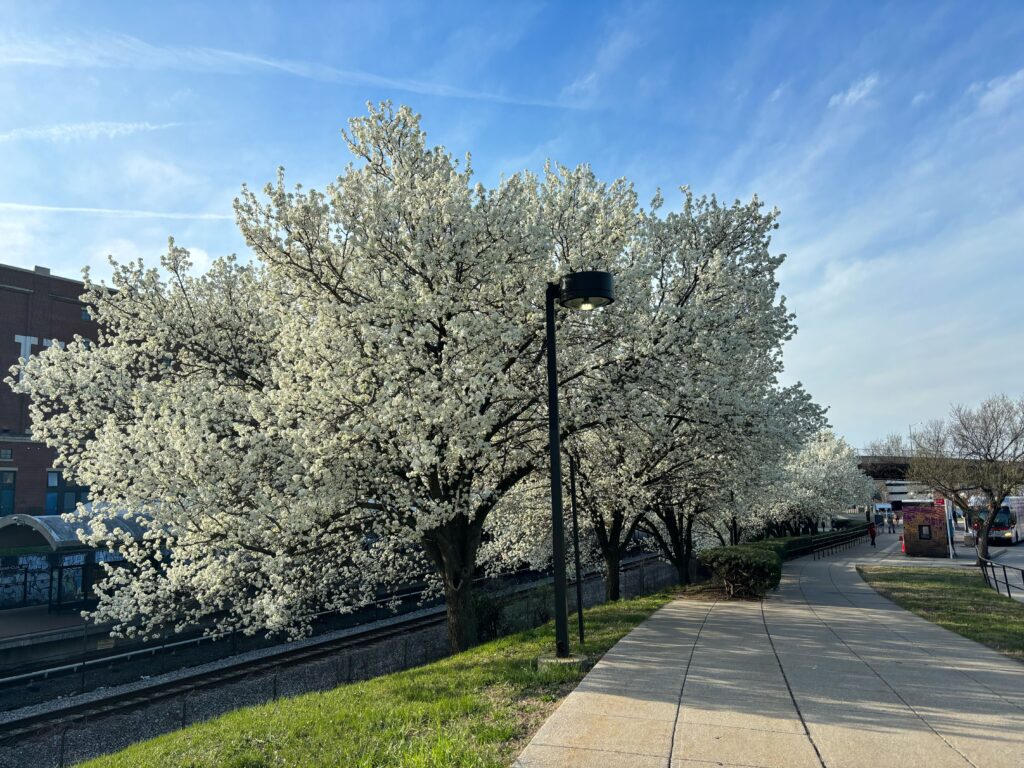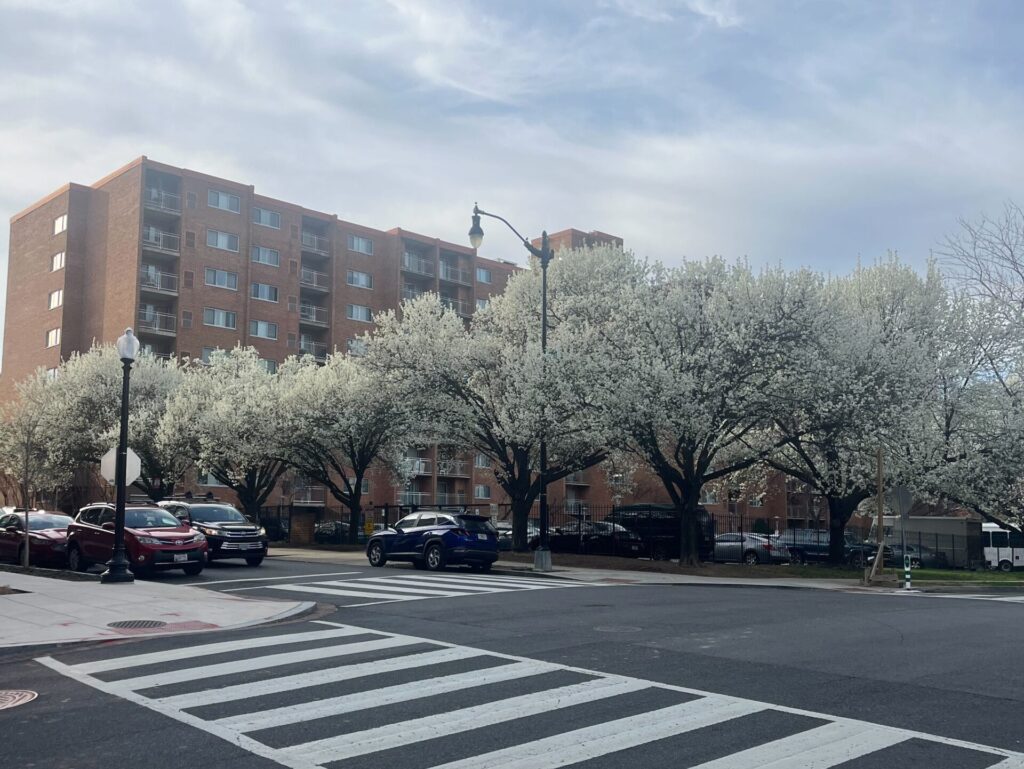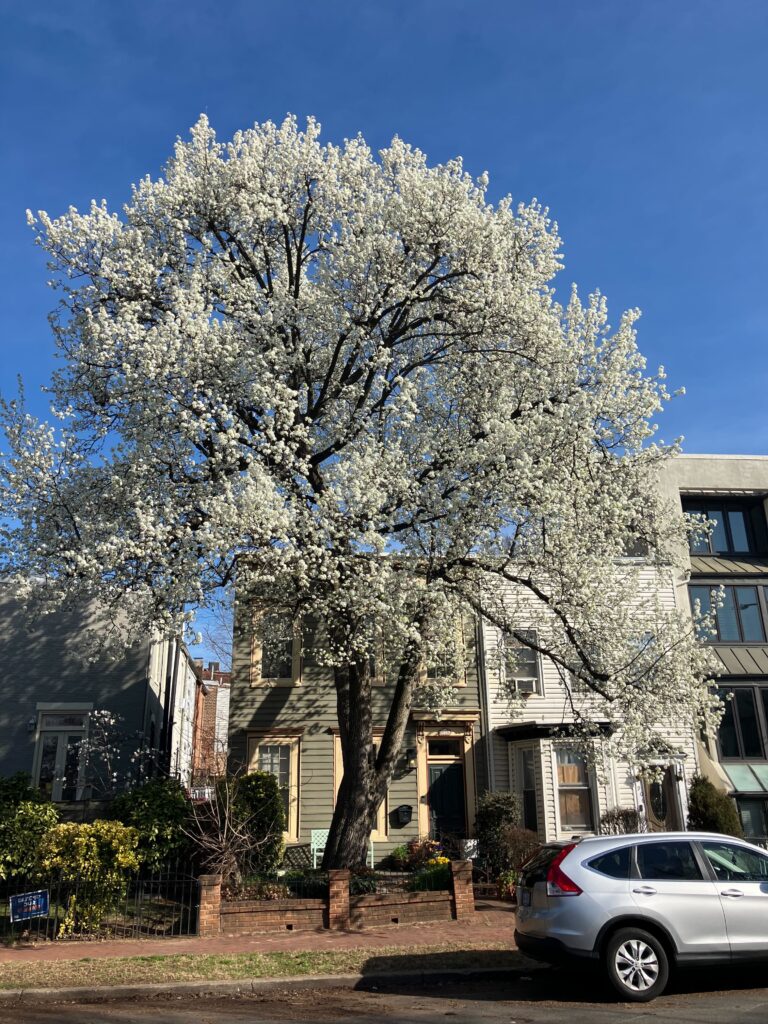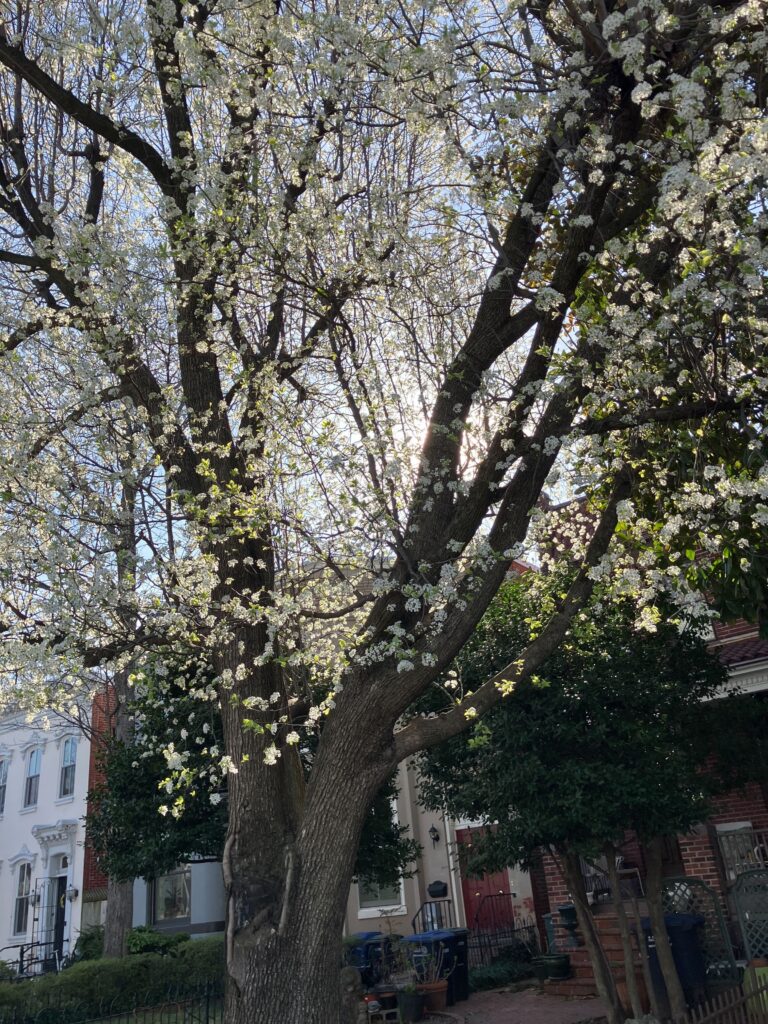THE LEAFLET

The Bradford Pear Problem
You may have noticed the plentiful, white puffy flowers on trees in yards or lining highways this time of year. Every spring there is an explosion of white blooms on trees throughout our region that show earlier than other trees, giving even our beloved cherry trees some keen competition in a race to peak bloom. We’re talking about none other than the Bradford pear tree (and other cultivars of Callery pear) – a once welcome addition to the neighborhood that’s now more of a headache than a highlight.
Unlike some other invasive troublemakers that have been hanging around for ages, the Bradford pear is a bit of a newcomer. Originating in the 1960s, it was introduced by the US Department of Agriculture as an early blooming tree for landscaping purposes. Many thought it was the “perfect” tree, with early spring blooms, shimmering, shiny foliage in summer, and rich red and orange colors in the fall. It was also hardy, growing in all kinds of conditions – wet or dry, in poor soil, and resistant to diseases and pests. For decades, it was planted plentifully in American cities and suburbs. However, its seemingly attractive qualities soon gave way to a litany of issues that have left communities regretting its presence.
Today, the Bradford pear stands as one of the most unwelcome additions to the local ecosystem. The tree’s wood is notoriously weak, prone to splitting and breaking, creating hazardous situations for utility and public works crews tasked with maintaining urban environments. Furthermore, the tree’s rapid growth and prolific reproduction has led to its offspring infiltrating natural habitats, outcompeting native species, and completely wreaking havoc on our native greenery.
Next, the Bradford pear blossoms, while initially appealing, emit a pungent odor that is far from pleasant, further tarnishing its already dubious reputation. Some describe the smell as “rotting fish”. Often described as a “scourge,” a “weed,” and a “monster,” it’s clear that sentiment towards this tree has soured significantly since its introduction.
For those seeking alternatives to the invasive Bradford pear, there is no shortage of options. Numerous flowering landscape trees offer similar aesthetic appeal without the accompanying headaches. The southern magnolia, eastern redbud, serviceberry, and flowering dogwood are just a few examples of trees that not only provide beautiful blooms but also integrate harmoniously into our local ecosystem without posing the same threats as the Bradford pear – all of which Casey Trees can plant for FREE!
So, if you’re thinking of adding a little greenery to your patch of paradise, do yourself a favor and steer clear of the Bradford pear. Trust us, your future self – and your local ecosystem – will thank you for it. Scroll through the gallery below to see various examples of the Bradford Pear/ Callery Pear across the city.
- Bradford Pears located at the Brookland/CUA metro station.
- Bradford Pears located at the Brookland/CUA metro station.
- Bradford Pears located outside of the Children’s National Hospital.
- Bradford Pears located at the intersection of First and I street.
- Bradford Pears located at 8th and E street intersection.
- Bradford Pears located at the Brookland/CUA metro station.
- Bradford Pears located at 10th and independence SE.
- Bradford Pears located at 10th and independence SE.
